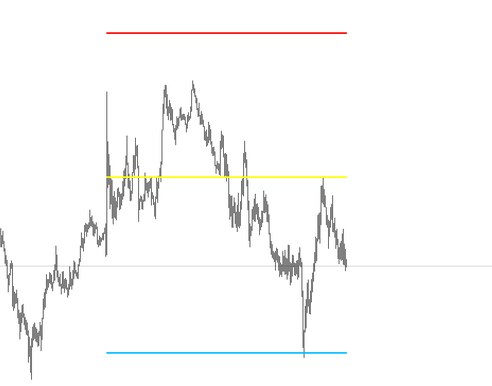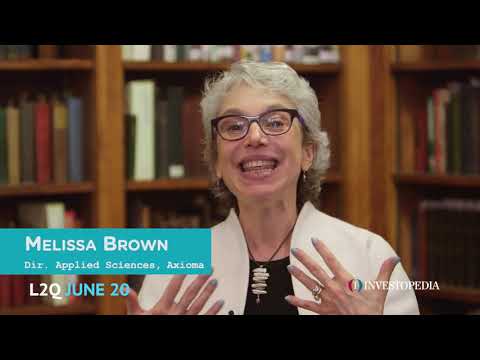Contents
Because a brief survey does not need the researcher to conduct it directly, it allows the researcher to deal with a small group of people. You want to see if there’s a link between two parameters, but you don’t expect to uncover a cause-and-effect relationship. Correlational research can help academics construct hypotheses and make predictions by providing insights into complicated real-world interactions. There are a few instances where correlational research is the best option.
Partial correlation measures the strength of a relationship between two variables, while controlling for the effect of one or more other variables. There are three types of correlations between the two variables. Correlation analysis studies the relationship or connection between two or more variables. Two variables are said to be correlated if they differ in such a way that changes in one variable accompany changes in the other. Correlational study just demonstrates the association between variables; it does not imply causality.
Suppose in a manufacturing firm, they want to know the relation between production volume & the efficiency of machinery equipment. When the price of mango increases, the demand for mango decreases. You can quickly identify the statistical link between two variables using research methodology.
Zero Correlational Analysis is a method of analysis in which there is no connection between. A form of similar experiment known as zero correlational research combines multiple parameters which were not mathematically related. High co – relational research, low correlational research, and no correlational research are the three forms of correlational study. In its most basic form, correlational research aims to determine if two factors are connected and, if so, how. Variables may be thought of as areas of focus which can take on various forms. A natural source variable itself has not been made by the researchers in any way.
The range of values for the correlation coefficient is -1.0 to 1.0. Anytime the correlation coefficient, denoted as r, is greater than zero, it is a optimistic relationship. The correlation between automotive weight and maintenance cost has an absolute worth of zero.20. Therefore, the connection between car weight and reliability is stronger than the relationship between car weight and upkeep cost.

Coefficients of correlation measure only linear correlation between X and Y. The coefficient of correlation cannot take value less than -1 or more than one +1. Yield of paddy and the use of fertilizers is an example of simple correlation as yield of paddy depends on the use of fertilizers i.e. presence of one variable affects another variable.
When Must Correlational Research be Used?
I.e. increase or decrease in one leads decrease or increase in the other respectively. A calculated number larger than 1.0 or lower than -1.zero implies that there was an error within the correlation measurement. CorrelationCovarianceIt is a measure of how closely two random variables are connected. Correlation coefficient is independent of the change of origin and scale.

The best way to find the correlation and regression between two variables is by using Pearson’s correlation coefficient and by employing the ordinary least squares method respectively. Correlation and regression are statistical measurements that are used to give a relationship between two variables. For example, suppose a person is driving an expensive car then it is assumed that she must be financially well. To numerically quantify this relationship, correlation and regression are used.
Perform Correlation Analysis at Ease in Minitab
In regression the curiosity is directional, one variable is predicted and the other is the predictor; in correlation the interest is non-directional, the relationship is the important facet. The t-check is used to determine if the correlation coefficient is significantly completely different from zero, and, hence that there is evidence of an association between the 2 variables. The value of a correlation coefficient has no bearing on whether or not it is statistically vital.
However, a correlation coefficient with an absolute value of zero.9 or higher would characterize a really sturdy relationship. Ans.1 Correlation is a process to establish a relationship between two variables. In statistics, methods of correlation meaning and types of correlation summarize the relationship between two variables in a single number called the correlation coefficient. Simple correlation is a measure used to determine the strength and the direction of the relationship between two variables, X and Y.
However, maximum values of some simple correlations cannot reach unity (i.e., 1 or –1). A negative correlation occurs when the values of two variables move in opposite directions. In other words, an increase or decrease in one variable https://1investing.in/ causes a decrease or increase in the other variable. When the variable \(x\) increases, the variable \(y\) decreases. Correlational study is solely willing to look backwards at historical information and observe the past.

Correlational research allows researchers to find a quantitative pattern connecting two apparently unrelated variables, and it serves as the foundation for all types of research. It helps you to connect two variables by monitoring their natural behavior. However, you want to find a statistical tendency that supports or refutes your hypothesis. In this scenario, correlational research can be used to find a trend that connects both parameters. Depending on the degrees of quantification and patterns of your data, several forms of statistical parameters and multiple regression are applicable. You’ve created a new tool for assessing your variable and want to see if it’s reliable or valid.
To check the cause and effect relationships between the pair of continuous variables. Negative Correlation – When the variables are changing in the opposite direction , we call it as a negatively correlated. For e.g. alcohol consumption and lifeline, smartphones usages and battery lifeline, etc. Q.4. The following data gives the heights of a father and his eldest son.
That is, it is fairly potential for a correlation coefficient of 0.1 to be statistically significant. This would mean that the 2 variables have little or no relationship to 1 one other, and that result’s most probably NOT a chance prevalence. On the opposite hand, a correlation coefficient of zero.ninety five won’t be statistically significant. So, do NOTassume that enormous coeffients are mechanically statistically significant or that small coefficients are not. However, in a non-linear relationship, this correlation coefficient may not always be an acceptable measure of dependence.
Define Correlation
A scatter plot could also be used to depict the relation between variables. A movement from one of the factors might not even cause an equal or opposite modification in the other variable in this scenario. Reasons for the difference in ambiguous causal links are accommodated by zero correlational research. Even though money and endurance are linearly separable, these can be factors in zero correlational study.
The main difference between correlation and regression is that correlation is used to find whether the given variables follow a linear relationship or not. Regression is used to find the effect of an independent variable on a dependent variable by determining the equation of the best-fitted line. The module also includes a variation on this kind called partial correlation. The latter is useful whenever you want to take a look at the relationship between two variables while eradicating the impact of 1 or two other variables.
Compute the correlation coefficient between the heights of fathers and sons using Karl Pearson’s method. Even though the cause-and-effect relationship cannot be established, we can conclude that the two variables, demand and price, are correlated. Correlational research takes shorter time and costs less money to conduct than experimental investigation. When dealing with a small number of researchers and limited funds, or when the amount of variables used in this study is kept to a minimum, this becomes a significant benefit.
- Correlation and regression are statistical measurements that are used to quantify the strength of the linear relationship between two variables.
- This robust negative correlation signifies that because the temperature decreases outdoors, the prices of heating bills enhance and vice versa.
- Causation is one plausible explanation for the association, but this is not the only one.
After you’ve checked for a correlation amongst your factors, you should do a regression analysis. Pearson’s correlation coefficient and ordinary least squares method are used to perform correlation and regression analysis. The most commonly used formula to find the linear dependency of two sets of data is Pearson’s Correlation Coefficient Formula.
To look into the causal links between variables.
The strength of a relationship between two variables is indicated by absolutely the valueof the correlation coefficient. The correlation between automotive weight and reliability has an absolute value of zero.30. How many coefficients truly turned out to be statistically vital? Since that is only for the lower triangular matrix, we must double this number to get the whole for the entire matrix. Non-linear or curvilinear correlation is said to occur when the ratio of change between two variables is not constant. It can happen that as the value of one variable increases linearly with time, the value of another variable increases exponentially.
It essentially measures the monotonicity of a relationship between two variables. In other words, it tells how well the relationship between two variables can be represented using a monotonic function. For example, if \(r\) is \(+1\), the variables have a perfect positive correlation. If the value is \(-1\), the variables have a perfect negative correlation, and if the value is \(0\), there is no correlation between the variables. Positive and negative correlation coefficients can be used as indicators by investors. Look for a significant positive correlation to determine which way the wind is blowing with a specific stock in relation to the overall economy.
